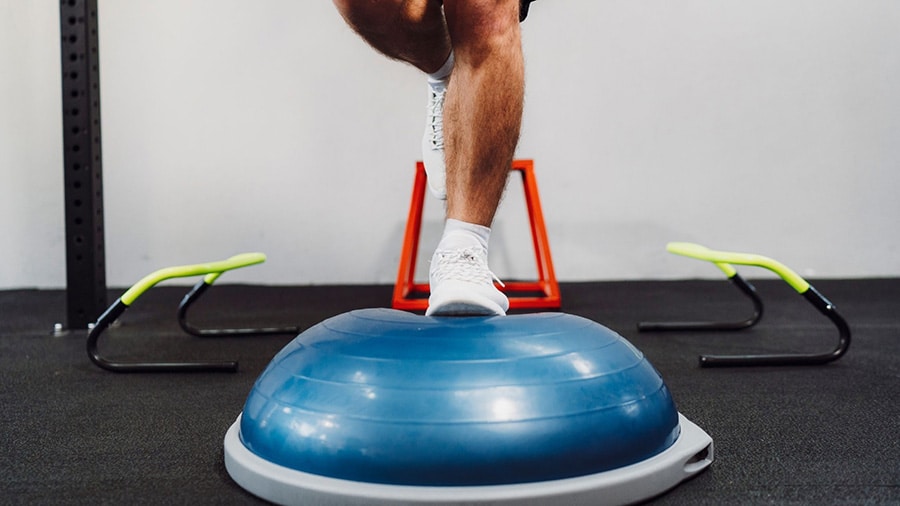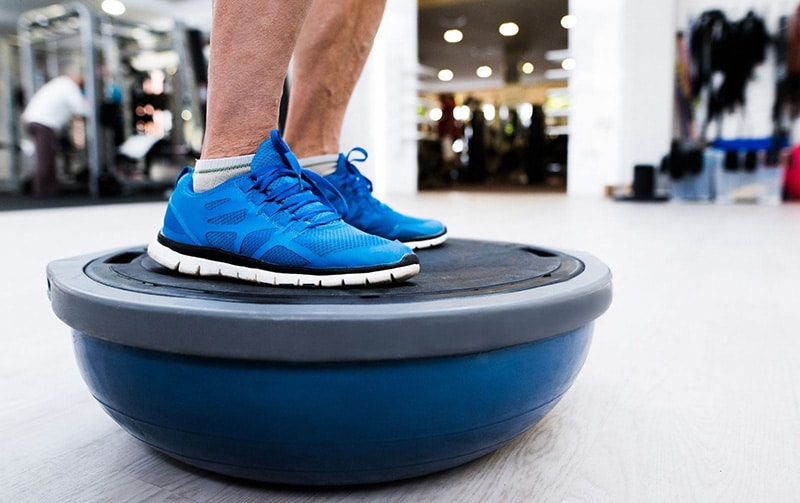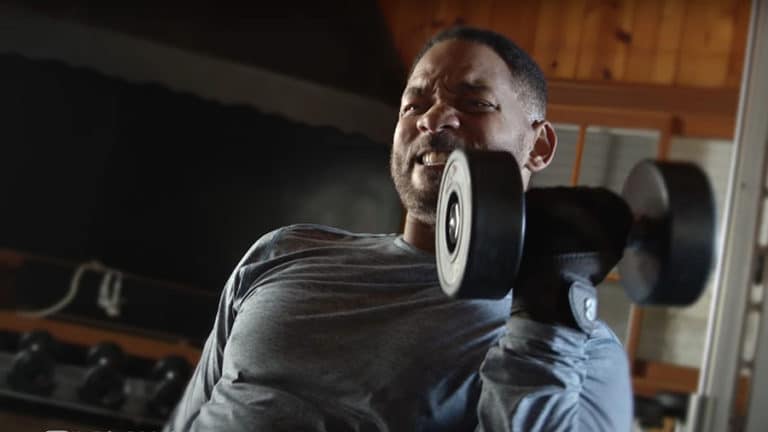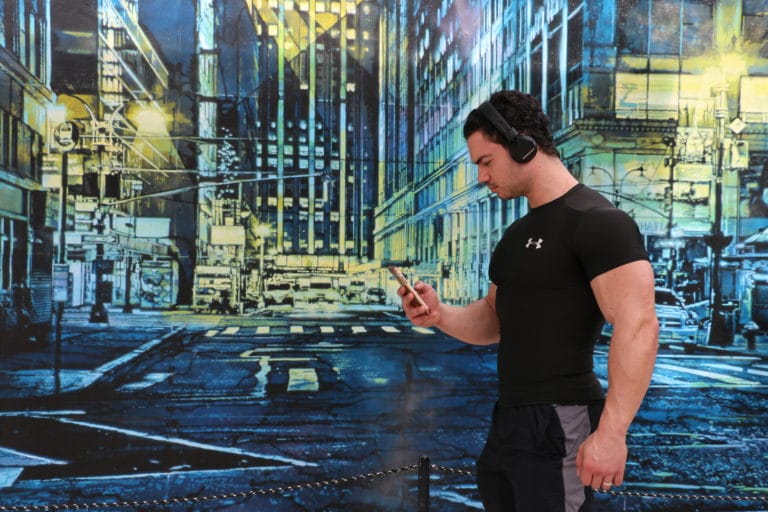Why and how to use BOSU?
His name may not ring a bell, but I'm sure you've seen this fitness accessory in a weight room or physical therapy office. This is the balance ball, more commonly known as the BOSU. Often indispensable during the reathletization phases after a lower limb injury, it is also very useful for bodybuilders who want to strengthen their deep muscles and work on the proprioception.
Contents
What is a BOSU?
The BOSU takes its name from the brand that democratized this sports accessory. The term BOSU is actually an acronym for "BOth Side Up", an expression that refers to the dual use allowed by this accessory. This equipment for physical preparation was invented in 1999 by David Weck, today director of the company BOSU Fitness.
The BOSU Pro Balance Trainer, the brand's flagship model, has a diameter of 67 centimeters and a height of approximately 25 centimeters (depending on the inflation of the dome). Many brands specialized in physical activity now offer their own balance balls. The dimensions can thus evolve according to the models.
Regardless of the brand you choose, this fitness equipment in the shape of a half-balloon consists of two sides:
- a rigid, non-slip platform on one side,
- a rubber dome similar to a fitness ball (or swiss ball) on the other.
The unstable rubber side allows you to perform exercises of muscle strengthening in instability, while the flat side offers more balance. It can therefore be interesting to integrate this accessory into your training sessions. weight-training program to work on your balance and proprioception. But what is proprioception?
Proprioception is a key concept. It refers to the ability of the nervous system to receive information from the muscles, joints and bones. The more the nervous system is able to receive information, the easier it will be to locate your body in space. For athletes, this global balance is essential insofar as it allows them to move better and to create gestural and postural automatisms.
Whatever your practice (weight training, running, team sports, combat sports, swimming, etc.), working on proprioception will help you perfect the gestures specific to your discipline and become more efficient.
Why use a BOSU?
The benefits of BOSU
Whether you are a beginner or an experienced athlete, there are several advantages to training with instability.
Contrary to the classic bodybuilding exercises, the work in imbalance allowed by the BOSU solicits greatly the deep muscles. Stabilizing muscles particularly in the abs and lower body joints will intervene to ensure your stability during the entire exercise. This is also the case for the spinal muscles (the erector spinae muscles located in the lower back).
Whether you are using the rigid side (dome down) or the unstable side of the BOSU (dome up), your body will naturally seek to compensate for the imbalance voluntarily created by activating numerous muscle groups.
For bodybuilders and athletes, this proprioception work is essential, because it allows to :
- develop strength,
- to tone up the muscles,
- improve balance and overall fitness,
- develop coordination,
- Reduce the risk of injury to joints and ligaments (strains, sprains, etc.).
The complementarity between proprioception and strength training
On a daily basis, your back and your abdominal strap are greatly involved in the realization of your different movements by keeping you in balance. Therefore, it is essential to strengthen them through proprioception.
In this sense, doing proprioception with BOSU is perfectly complementary to your usual exercises at the gym. These exercises will allow you to develop your superficial muscles (these are the muscles just under the skin such as the biceps, triceps, pectorals, shoulders, back, quadriceps or calves) and to gain muscle mass. Proprioception will help you reach your goals by strengthening stabilizing muscles and joints.
Who is BOSU for?
The BOSU is an accessory for all athletes. It can be used to build muscle as part of a physical preparation or for the rehabilitation after an injury. Depending on the objective and the physical abilities of the individual, the exercises will of course have to be adapted.
The physiotherapists often use this training material as part of their reathletization work following a knee or ankle injury.
The sports coaches and other fitness trainers also offer their clients exercises with a BOSU ball to tone their muscles. For example, they can be easily integrated into HIIT or cardio training.
This accessory is also very appreciated by soft gym or pilates teachers for its playful aspect and its numerous benefits.
3 exercises to perform with a BOSU
Exercise 1: Squats
The squats on a BOSU are effective for building leg and buttock muscles.
Simply place your feet on the rigid side of the BOSU (spherical side towards the ground) and perform the movement of a classic squat body weight. Look straight ahead to stay stable while performing this weight training exercise.
To make this squat exercise more difficult, you can add weight by taking dumbbells or weight discs in your hands.
Exercise 2: Slots
The slots on the BOSU are another great exercise to strengthen your thighs. This move can be done on the hard side or on the spherical side of the balance ball.
Place your front leg on the BOSU, then bend the knee to 90 degrees before returning to the starting position. Do 4 to 5 sets of 10 to 12 reps, making sure you do the movement correctly so you don't injure yourself.
Exercise 3: Push-ups
The pumps on BOSU can again be performed on the platform or on the unstable dome.
Place your hands on the ends of the hard surface or half-sphere, then bend your elbows until your torso is close to the BOSU. Then return to the starting position while keeping your back straight and engaging your abs.
In addition to the pectoral, triceps and deltoid muscles, this sleeving exercise will solicit the stabilizing muscles of the trunk.
A variation of these unstable push-ups is to place your feet on the BOSU instead of your hands.
Conclusion
The BOSU makes it possible to carry out many fitness exercises and weight training. Both fun and versatile, this balance ball is essential to improve your proprioception and strengthen your deep muscles. And you, have you already integrated the BOSU in your sports training?







